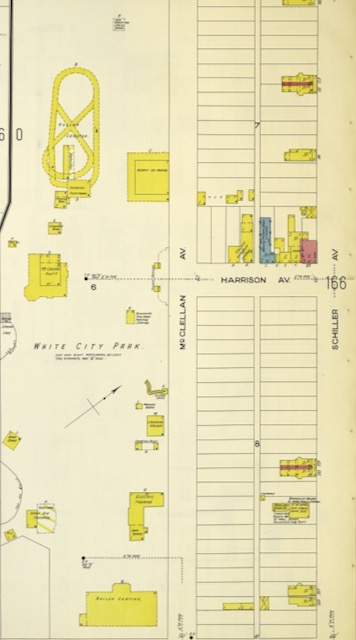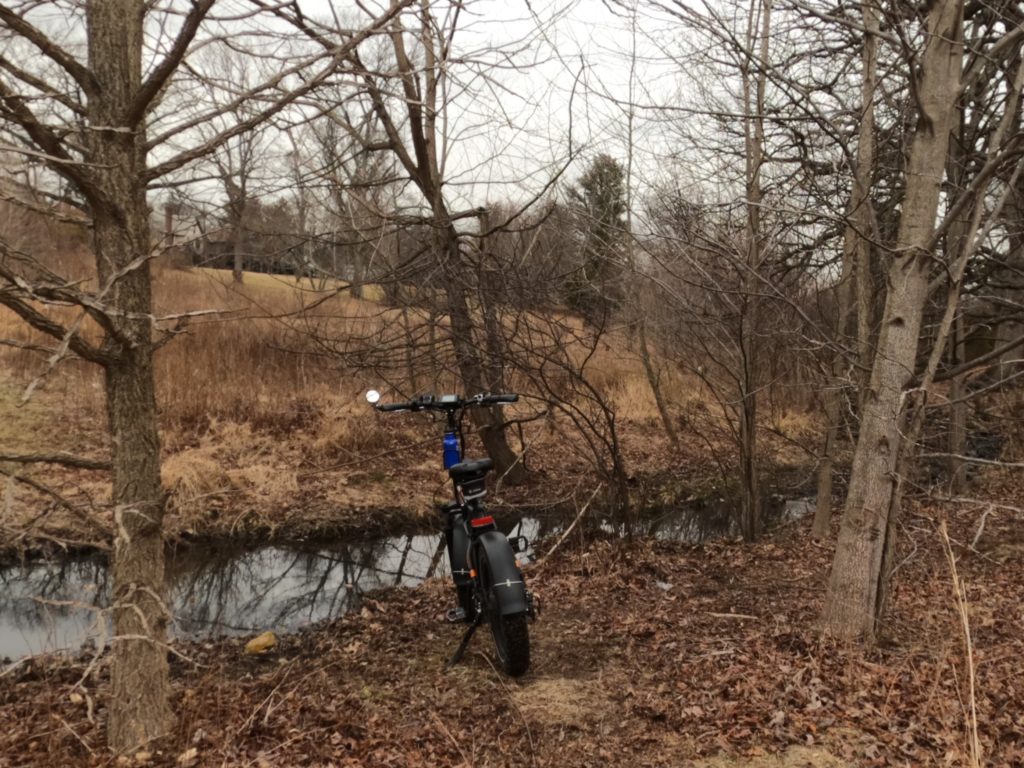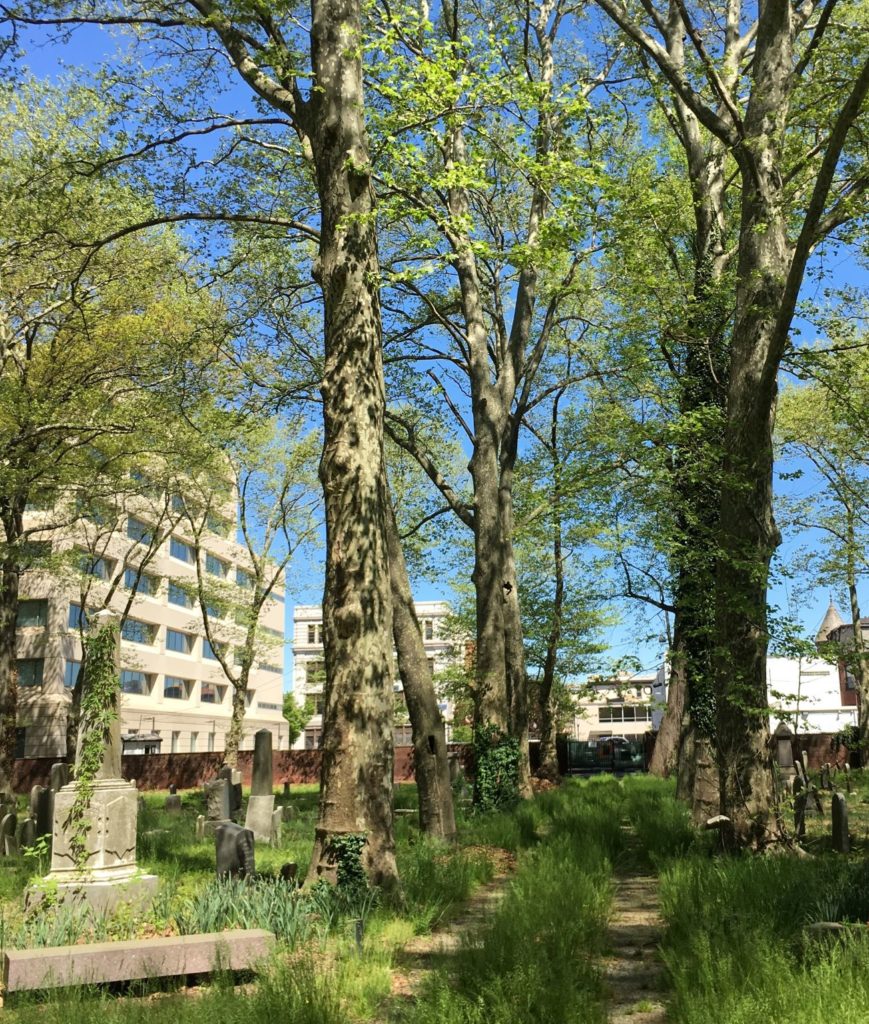
Tag: Trenton
Spring Lake Park E-Biking

Spring Lake is part of Roebling Park, which is in the Abbott Marshlands of New Jersey. The park has had many names over the years. In the early twentieth century, this was the White City Amusement Park. It was renamed Boiling Springs Park a few years before it closed in 1922.
The Casino restaurant, a c. 1820 mansion that is now privately owned, provided patrons a view of the landscape below. A grand staircase allowed them to walk down to the lake, where there were more rides. The staircase is one of the few visible remnants of its past.
Most of the trails are for walking only, but the Spring Lake loop is bikeable. This park is currently closed due to the COVID-19 pandemic.





A Bit More on Trenton’s Hog Island Cranes

accession no. 1977.0003
Here’s a few more details on the cranes at the Marine Terminal Park. According to the National Register of Historic Places nomination form, the cranes were originally 15 ton oil burning, steam powered locomotive gantry cranes built by McMyler Interstate Company of Cleveland, Ohio in 1917. Twenty-eight of them were purchased by the new Hog Island shipyard in 1917. There is an excellent summary of Hog Island by John Lawrence on the also-excellent Encyclopedia of Greater Philadelphia

accession no. 1977.0003
The steam gantry cranes have a 15 ton capacity at 15 ft. radius, mounted on tracks, with holding and closing lines and clam shell buckets of 3/4 and 1 1/2 yard capacity. Provision is made for magnets at 35 ft. radius with portable electric power. In 1952 they were overhauled and the boilers replaced. They stand on four legs, and are approximately 40 ft. tall.
TAMS 1952
The Hog Island Gantry Cranes

The first thing to realize is that the Hog Island cranes are no longer on Hog Island. When the United States entered World War I in 1917, a massive shipyard was set up alongside the Delaware River on Hog Island in Philadelphia to build transport and cargo ships, although none of the ships were completed before the war ended in 1918.

In 1930, Philadelphia bought Hog Island and transformed it into what is now the Philadelphia International Airport. Two of the cranes were sold and moved upriver to Trenton. At the Trenton Marine Terminal, they were used to load and unload ships for several decades before being taken out of service. Only the two gantries remain; the cranes that sat on top of them are gone. The Hog Island cranes were listed on the National Register of Historic Places in 1980.

For more on Hog Island, see The Necessity for Ruins.
Cadwalader Park’s Abandoned Animal Paddocks

Frederick Law Olmstead did not want a zoo in the park he designed for the city of Trenton, but Trenton gave the people what they wanted anyway. These barns were added later and housed exotic deer and other animals into the 21st century. Recent work has restored the natural areas, but the abandoned and decaying animal barns remain in place for now.



To see what this area looks like in the summer, see Cadwalader Park Natural Area.
Roebling’s Shaky Bridge



This little suspension bridge, which spans the attractively named Waste Weir, was built by the Roebling Company. Some internet sources say it is a miniature replica of one of Roebling’s more famous projects, either the Brooklyn Bridge or the Niagara Bridge. Although it uses the same suspension technology, the design is not identical. Other sources say it was built to demonstrate suspension technology, and then given to the city of Trenton. I haven’t seen a firm date for when it was built.
The Shaky Bridge sits between the Delaware River and Route 29 in Stacy Park. Route 29 runs over the alignment of the Trenton Water Power, a seven mile long canal completed in 1834 – the same year as the 65 mile long D&R Canal.
Cadwalader Park Natural Area

Cadwalader Park was created by the city of Trenton in 1888 from land previously owned by Dr.Thomas Cadwalader. In 1890, Frederick Law Olmstead (best known for designing New York City’s Central Park) was hired to create a design for Trenton’s new park.
Prior to Olmstead’s involvement, the city had already started displaying animals in a “zoological garden.” After Trenton dropped Olmstead’s firm for financial reasons, the city added a deer paddock–which Olmstead opposed–on the west side of the park. Olmstead had other plans for that area, called the Western Ravine:
In the broader wooded valley at the west end of the park, Olmsted planned a series of pools that was reminiscent of the Pool and Loch of upper Central Park…The Preliminary Plan of 1891 shows most of the Ravine taken up by five naturalistic pools…with a connecting stream. The three lower pools are shown surrounded with dense vegetation, while the borders of the two upper pools are somewhat more open and more visible from the adjoining meadow areas. These upper pools have four beach areas where the nearby path expands to form a shallow wading area.
Cadwalader Park Master Plan, 1998
Much of Olmstead’s plan was not constructed, and many modifications to the design were made the city. A deer paddock was built in 1895, and a sheep house and elk house were also added. By 1906, the park zoo included not only nine fallow deer, but over a dozen other types of animals, including coyotes, alligators, bears, monkeys, and a kangaroo. Two animal barns were added in the western ravine, which are still standing.


The park declined in the 1970s (although the city’s museum, Ellarslie, was created in 1978 in the former monkey house). Deer were kept in the paddock until about ten years ago. As part of a master plan to restore Cadwalader Park, The D&R Greenway Land Trust, the City of Trenton, and several other partners united to restore the paddock area to a more natural meadow and wetland environment. Where once captive deer lived behind a fence, white-tailed deer now run wild.

“The Wife of my Youth”
This 19th century graveyard monument in Mercer Cemetery engraved to “The Wife of My Youth” first makes you wonder what kind of monument the wife of his dotage got. But the phrase is from the Old Testament of the Bible:
Let thy fountain be blessed: and rejoice with the wife of thy youth.
Proverbs 5:18


Mercer Cemetery
The Mercer Cemetery in Trenton, NJ, was created in the 1840s. There were few new internments after the 1930s. Unlike the Riverview Cemetery, which is still active, no one has been buried in Mercer since 1973. In the 1990s, the city spruced up the cemetery, but it became neglected, landscaping and maintenance was deferred, and conditions within the cemetery deteriorated. Fortunately, Trenton is now looking to rehabilitate the Mercer cemetery, beginning with a recent volunteer cleanup effort.





Canal Bridgetender’s Houses
These three small houses are located along the Delaware and Raritan Canal in Trenton, where movable bridges formerly crossed the canal. Houses were provided so the bridgetenders were always available to swing the bridge out of the way as a canal barge passed through.
The Hanover Street house was renovated when Thomas Edison State College built the large building that partially surrounds it. The Calhoun Street house appears to be stabilized, while the Prospect Street house looks occupied.



Hanover Street Bridgetender’s House. Source: TCM

Calhoun Street Bridgetender’s House. Source: TCM

Calhoun Street Bridgetender’s House. Source: TCM


